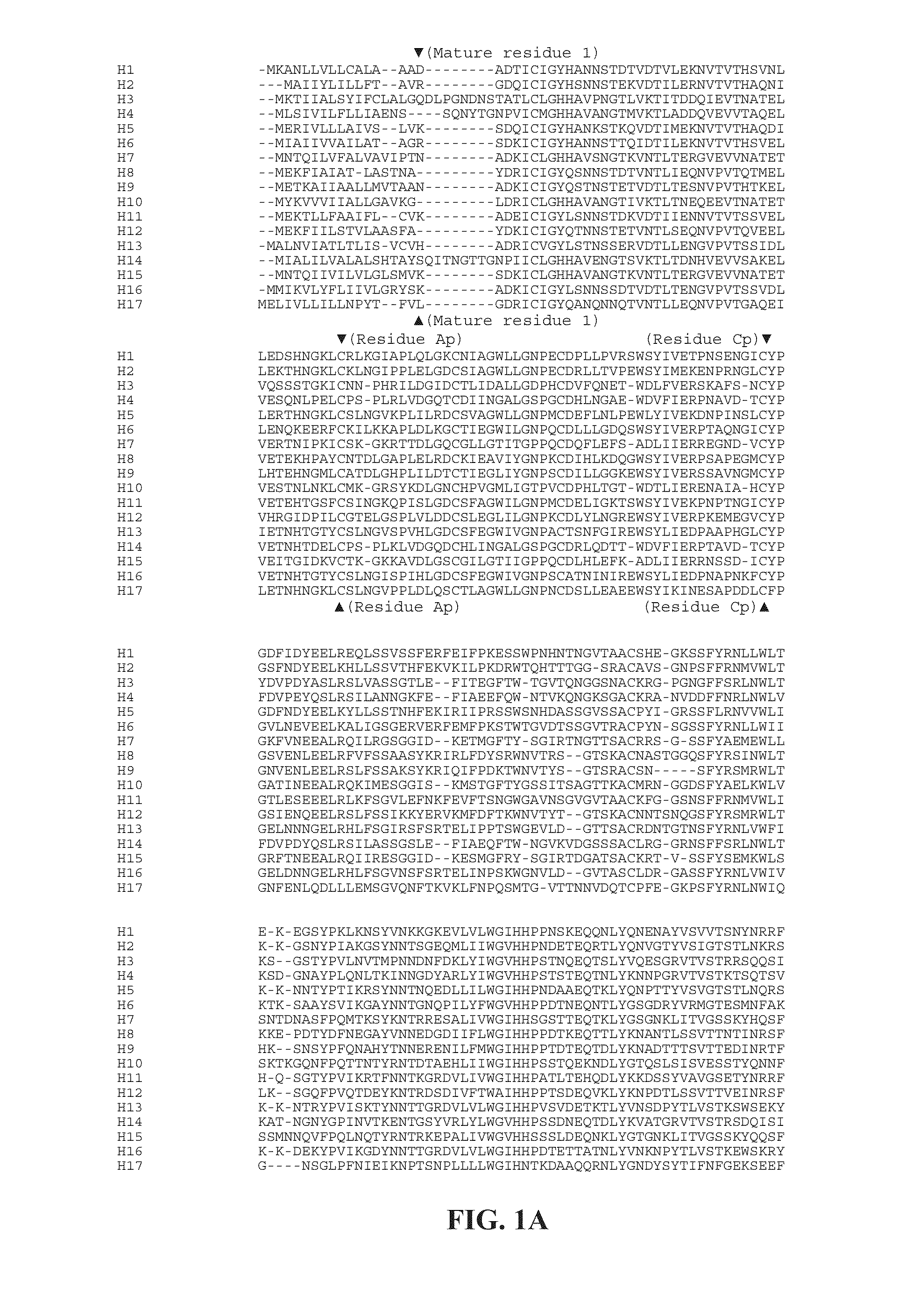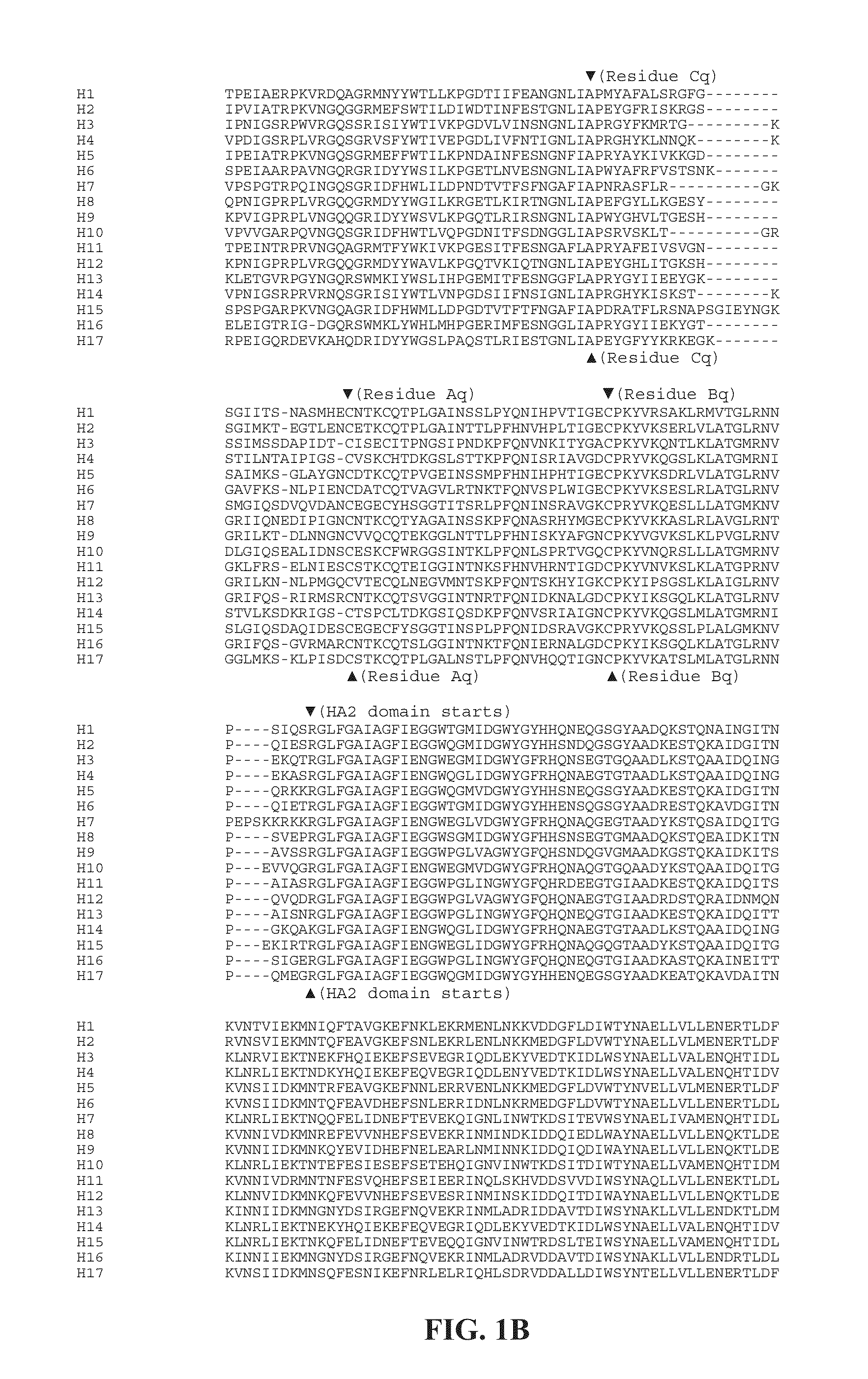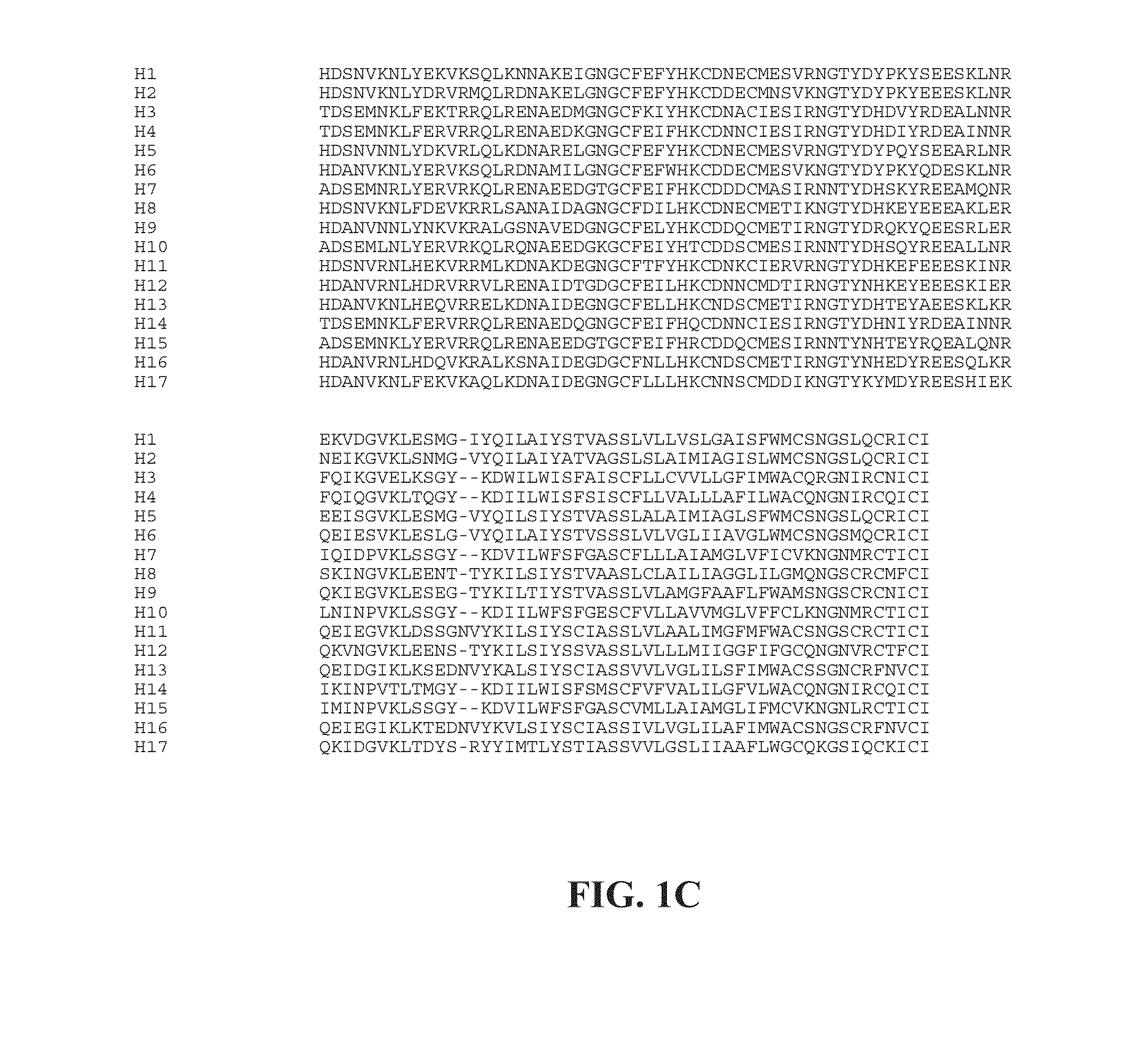Influenza virus vaccines and uses thereof
a technology of influenza virus and vaccine, applied in the field of influenza virus vaccine, can solve the problems of infrequent pandemics, substantial cumulative morbidity and mortality caused by seasonal influenza, and difficulty in achieving match, so as to reduce or ameliorate the severity prevent the progression of influenza virus infection, and reduce the duration of influenza virus infection
- Summary
- Abstract
- Description
- Claims
- Application Information
AI Technical Summary
Benefits of technology
Problems solved by technology
Method used
Image
Examples
example 1
6.1 Example 1
Chimeric Influenza Virus Hemagglutinin Polypeptides
[0429]This example describes chimeric influenza virus hemagglutinin polypeptides and methods for inducing high levels of cross-neutralizing HA stalk antibodies in a subject comprising administration of said chimeric influenza virus hemagglutinin polypeptides. As described in this example, chimeric influenza virus hemagglutinin were generated that were successfully expressed by influenza virus and by cells engineered to express the chimeric influenza virus hemagglutinin. The chimeric influenza virus hemagglutinin were successfully recovered in their proper conformation, as evidenced by antibody recognition of both the stem and head domains of the chimeric influenza virus hemagglutinin.
[0430]FIG. 2 depicts chimeric influenza virus hemagglutinins (HAs), comprising the stem / stalk domain of an H1 subtype of influenza virus and the heterologous globular head domains of other influenza virus subtypes (H2, H3, and H5). Followin...
example 2
6.2 Example 2
Viruses Expressing Chimeric Influenza Virus Hemagglutinin Polypeptides
[0433]This example describes several functional chimeric influenza virus hemagglutinins encompassing a variety of globular head and stalk combinations from different hemagglutinin subtypes as well as recombinant influenza viruses expressing these chimeric hemagglutinins, which had growth properties similar to those of wild-type influenza viruses.
6.2.1 Materials and Methods
6.2.1.1 Cells and Viruses
[0434]293T and MDCK cells were obtained from the American Type Culture Collection (ATCC, Manassas, Va.) and were maintained either in Dulbecco's minimal essential medium (DMEM) or in MEM (Gibco, Invitrogen) supplemented with 10% fetal calf serum (HyClone; Thermo Scientific) and penicillin-streptomycin (Gibco, Invitrogen).
[0435]All A / PR / 8 / 34 recombinant viruses were grown in 10-day old embryonated chicken eggs at 37° C. for 2 days.
6.2.1.2 Construction of Plasmids
[0436]Plasmids encoding the different chimeric h...
example 3
6.3 Example 3
Diagnostic Applications of Chimeric Influenza Virus Hemagglutinin Polypeptides and Vaccination of Mice with Chimeric Influenza Virus Hemagglutinin Polypeptides
[0454]This example demonstrates that chimeric influenza virus hemagglutinin polypeptides can be utilized for diagnostic purposes and that viruses expressing chimeric influenza virus hemagglutinin polypeptides can be utilized in vaccines.
6.3.1 Materials and Methods
6.3.1.1 Cells and Plasmids
[0455]293T and MDCK cells were obtained from ATCC and were maintained in Dulbeccos's Modified Eagle's medium (DMEM) and Minimal Essential Medium (both from Gibco), respectively, each supplemented with 10% fetal calf serum (HyClone), and 100 units / ml of penicillin-100 μg / ml of streptomycin (Pen / Strep, Gibco). TNM-FH (Sigma-Aldrich) supplemented with 10% fetal calf serum and Hyclone SFX insect culture media (ThermoScientific) were used for Sf9 and BT1-TN5B1-4 (High Five) cell culture.
[0456]Chimeric hemagglutinin constructs with the...
PUM
| Property | Measurement | Unit |
|---|---|---|
| concentrations | aaaaa | aaaaa |
| concentrations | aaaaa | aaaaa |
| concentrations | aaaaa | aaaaa |
Abstract
Description
Claims
Application Information
 Login to View More
Login to View More - R&D
- Intellectual Property
- Life Sciences
- Materials
- Tech Scout
- Unparalleled Data Quality
- Higher Quality Content
- 60% Fewer Hallucinations
Browse by: Latest US Patents, China's latest patents, Technical Efficacy Thesaurus, Application Domain, Technology Topic, Popular Technical Reports.
© 2025 PatSnap. All rights reserved.Legal|Privacy policy|Modern Slavery Act Transparency Statement|Sitemap|About US| Contact US: help@patsnap.com



